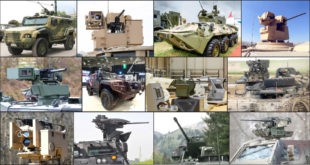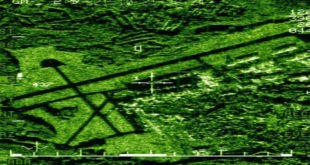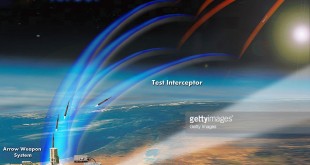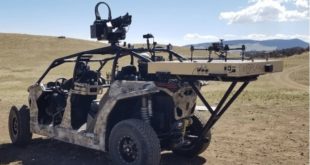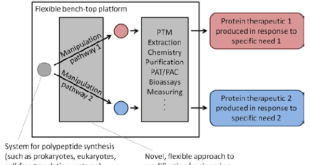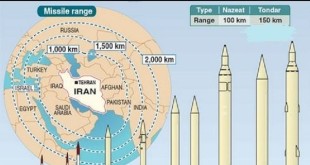The Department of the Navy Chief Information Officer Aaron Weis has released the DON Information Superiority Vision in Feb 2020 which conveyed the DON’s vision for information superiority through our information, modernized network design, and our workforce; and defines our way forward. As stated by General David H. Berger, the 38th …
Read More »Rising employment of Remote controlled weapon station (RCWS), or Remote weapon station (RWS), and Remote-controlled firearms by Militarries and Terrorists
Remote controlled weapon station (RCWS), or Remote weapon station (RWS), were first type of autonomous weapons employed by military. Militaries also employ remote controlled weapon station (RCWS), or remote weapon station (RWS), also known as a remote weapon system, (RWS) is a remotely operated weaponized system often equipped with fire-control system …
Read More »DOD regards Electromagnetic Spectrum (EMS) as a critical battlespace in its own right, and launch it’s Electromagnetic Spectrum Dominance Strategy
Successful military operations depend upon freedom of action in the warfighting domains of air, space, ground, sea, and cyberspace. Today, effective command and control and situational awareness depend upon radio communications and sensors. Domination of the electromagnetic spectrum (EMS) enables joint force commanders to gain tactical, operational, and strategic advantage …
Read More »DARPA MTR will develop algorithms to enable SAR sensors to detect, geolocate, and image moving ground and airborne targets.
The aim of ground surveillance is the large scale, continuous and near real time determination of a dynamical ground picture. This task comprises detection and tracking of moving single targets and convoys, mobile weapon systems, and military equipment. The sensors of choice are airborne Ground Moving Target Indicator (GMTI) radar …
Read More »Israel successfully tests Multilayered Air Defense system to defend against Barrage of short-, medium- and long-range ballistic missiles,
Israel is a small country surrounded by many enemies, facing many security threats. Israel also faces a “high trajectory threat” that involves short-, medium- and long-range ballistic missiles, putting the country in jeopardy of facing an unprecedented barrage. This could involve thousands of missiles fired a day at Israel, and …
Read More »AI and cognitive robotics progressing towards Artificial consciousness (AC), machines with emotional intelligence and be as convincing as people.
Artificial intelligence is a branch of computer science dealing with the simulation of intelligent behavior in computers. A computer system able to perform tasks that normally require human intelligence, such as visual perception, speech recognition, decision-making, and translation between languages. The first wave of AI was rule-based and “second wave” …
Read More »New structural health monitoring technologies can detect aircraft damage in real time and even predict failures
All kinds of engineering infrastructures undergo aging, and damage appears as a consequence of the loads applied to them, so inspection and maintenance actions are required to predict and lengthen their lifetime thus avoiding catastrophic failures. Due to the harsh conditions suffered by aircraft structures, periodic and scheduled inspection and …
Read More »Drones that can Autonomously launch and Land from a moving platform are new requirements for Defense and Security
An unmanned aerial vehicle (UAV) ( commonly known as a drone) is an aircraft without a human pilot on board. UAVs are a component of an unmanned aircraft system (UAS); which include a UAV, a ground-based controller, and a system of communications between the two. The flight of UAVs may …
Read More »DARPA Battlefield Medicine Bio-MOD program deveoping high speed manufacturing and delivery of urgently needed pharmaceutical products to Wounded Soldiers
Battlefield medicine, also called field surgery and later combat casualty care, is the treatment of wounded combatants and non-combatants in or near an area of combat. Studies of historical casualty rates have shown that about half of military personnel killed in action died from the loss of blood and that …
Read More »US-Iran conflict will be threat to Middle East because of Iran’s growing military power and deterrent capability
The threat of war between the US and Iran escalated in Jan 2020 when in retaliation for the U.S. assassination of military leader Qasem Soleimani, Iran launched a ballistic missile attack on two Iraqi bases housing U.S. troops. This action marks the most direct Iranian attack on the U.S. in …
Read More » International Defense Security & Technology Your trusted Source for News, Research and Analysis
International Defense Security & Technology Your trusted Source for News, Research and Analysis

